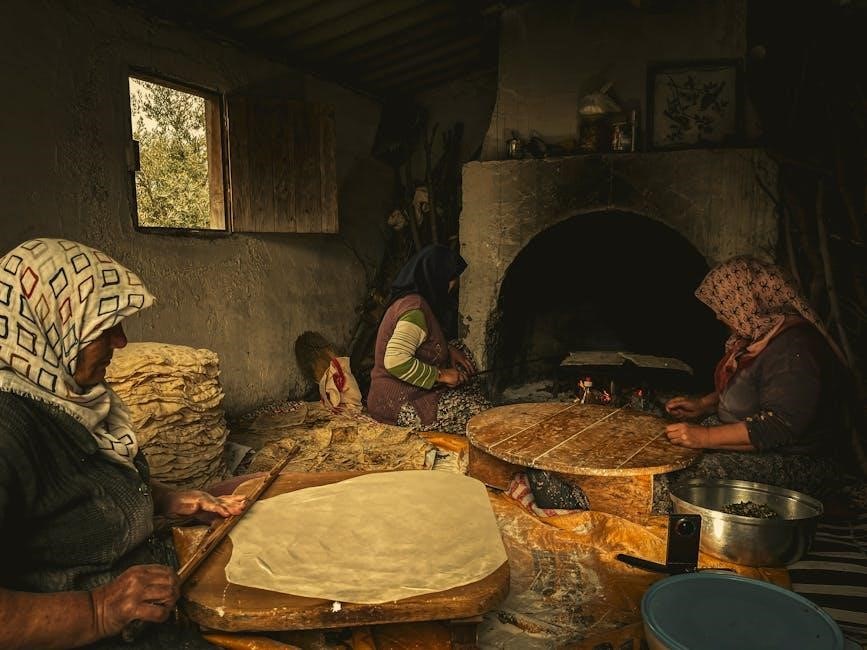the village blacksmith poem pdf
- Published
- in PDF
Overview of “The Village Blacksmith” Poem
Henry Wadsworth Longfellow’s “The Village Blacksmith” is a celebrated poem that paints a vivid picture of an honest, hardworking craftsman. The poem explores themes of labor, family, and the dignity of the common man, resonating with readers through its simple yet powerful message.
“The Village Blacksmith,” penned by Henry Wadsworth Longfellow, stands as a quintessential piece of American literature, celebrated for its portrayal of an ordinary working man. Published in 1841, the poem quickly gained popularity for its accessible language and uplifting themes. Longfellow’s work offers a glimpse into the life of a blacksmith, highlighting his strength, work ethic, and community role. The poem’s enduring appeal lies in its ability to connect with readers on a personal level, celebrating the values of hard work, perseverance, and family. It serves as a testament to the dignity of labor and the importance of finding pride in one’s craft, making it a timeless classic.

Inspiration and Context
Longfellow’s “The Village Blacksmith” was inspired by a real smithy near his home in Cambridge. The poem reflects the values of hard work and community prevalent in 19th-century America.
The Cambridge Smithy and Longfellow’s Inspiration
The poem’s genesis lies in a real-life setting: a smithy located under a chestnut tree near Longfellow’s Cambridge residence. Passing it daily, the poet observed the blacksmith’s unwavering dedication. This everyday scene sparked Longfellow’s imagination, leading him to immortalize the blacksmith’s character and work ethic in verse. The Cambridge smithy, therefore, served as a direct source of inspiration.
The poem captures the essence of the American spirit through the blacksmith’s portrayal. It embodies ideals of hard work, perseverance, and community values. Longfellow’s personal observations transformed into a powerful depiction of the working class and their contributions to society. The poem’s enduring appeal stems from its ability to connect with the reader on a human level, celebrating the dignity of labor and the importance of individual character.

Poetic Analysis
“The Village Blacksmith” offers a rich exploration of themes through vivid imagery and rhythmic language. Longfellow crafts a portrait of honest labor and perseverance, celebrating the dignity of working-class life.
Themes of Nature, Optimism, and Individuality
Longfellow weaves themes of nature, optimism, and individuality throughout “The Village Blacksmith.” The poem subtly reflects nature’s influence on the blacksmith’s life, grounding him in the natural world. Optimism shines through in the blacksmith’s diligent work ethic and contentment with his craft, highlighting a positive outlook. The blacksmith embodies individuality through his unique strength, appearance, and dedication to his work, setting him apart as a distinct character. His daily life and hard work create his individuality and optimism for his job. Longfellow reflects these themes to create a sympathetic portrait. He balances the idealized with the realistic, crafting an image of the blacksmith.
Blacksmith as a Symbol of Honest Labor
In “The Village Blacksmith,” the blacksmith stands as a potent symbol of honest labor and perseverance; Longfellow elevates the working-class life, depicting the blacksmith as a figure of dignity and contentment. Through sweat and toil, the blacksmith earns his living, embodying the value of hard work. He represents a craftsman who takes pride in his craft and derives satisfaction from his daily efforts. The blacksmith’s strong work ethic and dedication to his trade serve as an inspiration, highlighting the importance of honest labor in a growing nation. He doesn’t owe anyone anything. He works hard from morning until night.
Character Depiction
Longfellow crafts a memorable character in the village blacksmith. His physical strength, combined with his moral fortitude, creates a figure who embodies the values of hard work, family, and community, according to the poem.
The Blacksmith’s Strength and Appearance
Longfellow vividly portrays the blacksmith as a figure of immense physical strength. The poem emphasizes his “large and sinewy hands” and “brawny arms,” highlighting the power derived from his daily labor. These features suggest a man accustomed to hard work and physical exertion, reflecting the demands of his craft. His strong muscles are “strong as iron bands,” an analogy emphasizing his power. His face is tanned, and his brow is wet with honest sweat. The poet uses the description to show the blacksmith is strong and hardworking. This imagery reinforces the idea of the blacksmith as a symbol of robust health, resilience, and the dignity found in manual labor.
The Blacksmith’s Daily Life and Work Ethic
The poem presents the blacksmith as a man dedicated to his craft, working “from morning until night.” His brow is perpetually “wet with honest sweat,” illustrating his tireless work ethic and commitment to earning his living through honest labor. He earns whatever he can. Children admire him as he works. He is depicted as a central figure in the community, whose work is vital to the village’s functioning. He is working class and happy with his life. The blacksmith’s dedication is not just about physical work but also about his moral commitment to providing for himself and his family through diligent effort, showcasing his strong work ethic.

Literary Devices and Style
Longfellow employs vivid imagery and a strong, rhythmic language to depict the blacksmith and his environment. The poem’s accessible style and memorable rhymes contribute to its enduring appeal and accessibility for a wide audience.
Imagery and Rhythmic Language
Longfellow masterfully uses imagery to create a vivid and memorable portrait of the blacksmith and his surroundings. Descriptions such as “large and sinewy hands” and “muscles of his brawny arms” paint a picture of strength and physical labor. The “spreading chestnut-tree” and “roaring bellows” add to the sensory experience, immersing the reader in the blacksmith’s world. The poem’s rhythmic language, with its consistent meter and rhyme scheme, enhances its musicality and makes it easy to remember. This combination of vivid imagery and rhythmic structure contributes significantly to the poem’s enduring appeal and accessibility, making it a beloved piece of American literature. The rhythm creates a sense of the blacksmith’s steady, purposeful work.

Legacy and Enduring Appeal
“The Village Blacksmith” holds a significant place in American literature, celebrated for its portrayal of honest labor and community values. Its enduring appeal lies in its simple yet powerful message.
The Poem’s Place in American Literature
Longfellow’s “The Village Blacksmith” occupies a cherished position within American literary history, embodying the values of hard work, community, and the dignity of labor. The poem’s accessible language and relatable themes contributed to its widespread popularity, making it a staple in school curricula and family readings. It resonated deeply with a nation undergoing industrialization, offering a nostalgic glimpse into a simpler, more agrarian past.
The blacksmith, as depicted by Longfellow, became a symbol of the honest, self-reliant American worker, a figure admired for his strength, integrity, and dedication to his craft. The poem’s enduring appeal lies in its ability to capture a universal human experience.
